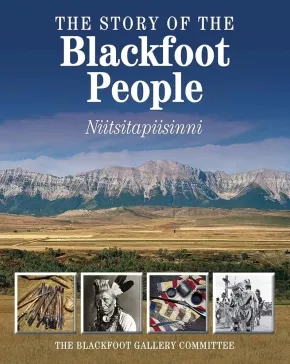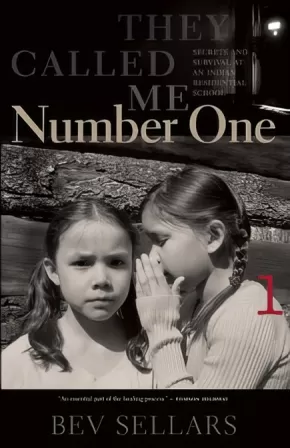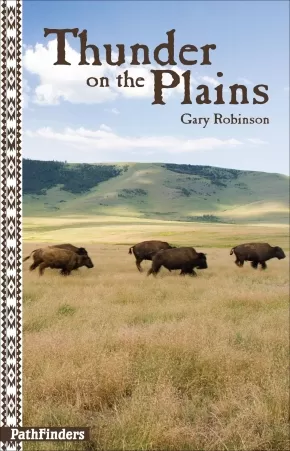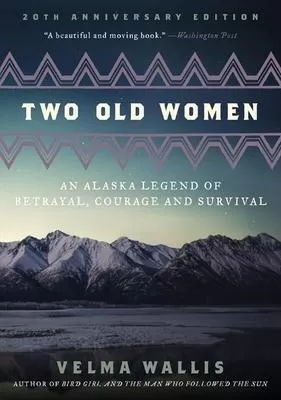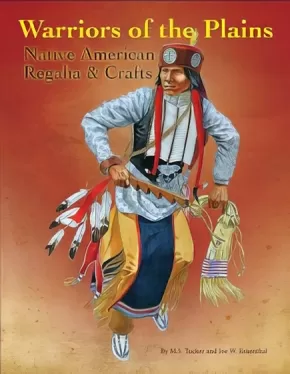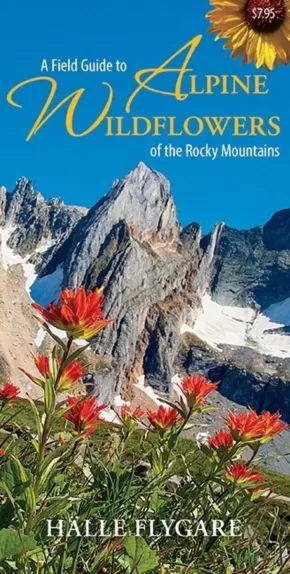Browse Books for Adults
Synopsis:
For the first time in history, the Blackfoot people share their culture, beliefs and traditions with the rest of the world.
In an innovative partnership with the Glenbow Museum in Calgary, Alberta, a team of elders and spiritual leaders from the Blackfoot community agreed to share their history, traditions and artifacts in an effort to document their lives. The Story of the Blackfoot People: Nitsitapiisinni is the first piece of permanent documentation written by the leaders of the Blackfoot community about their lives both past and present.
This book chronicles all the important aspects of Blackfoot life and history. The book begins by exploring the fundamental belief systems of the Blackfoot including their traditional stories, sacred places, dances and ceremonies. Strong relationships are recognized by the Blackfoot as one of the most important keys to survival and the roles of men, women, children and elders, and their sacred connection to nature and their environment, are examined in detail. Less harmonious relationships are also candidly explored including relations between the Blackfoot people and the governments of the United States and Canada. In its moving conclusion, the Blackfoot community discusses the importance of uniting ancient traditions with modern challenges in order for their legacy to survive.
Revealing the enduring strength and fortitude of spirit of the Blackfoot people, this book will have meaning for both native and non-native readers alike.
Authenticity Note: This work is labelled as containing Authentic Indigenous Text because of the contributions from elders and other Indigenous peoples.
Synopsis:
In a post-apocalyptic world, Bern and Elena are exiled from their village. Their crime? The two women are no longer of child-bearing age.
Forced to rely upon traditional wisdom for their survival, Elena and Bern retreat from the remains of civilization to a freezing, desolate landscape where they attempt to continue their lives after the end of the world. When a charismatic stranger from the village arrives seeking their aid, the women must decide whether they will use their knowledge of the past to give the society that rejected them the chance at a future.
Additional Information
80 pages | 5.36" x 8.39"
Synopsis:
Restoring the use of wild plants in daily life for vibrant physical, mental, and spiritual health
• Explains how 3 classes of wild plants--aromatics, bitters, and tonics--are uniquely adapted to work with our physiology because we coevolved with them
• Provides simple recipes to easily integrate these plants into meals as well as formulas for teas, spirits, and tinctures
• Offers practical examples of plants in each of the 3 classes, from aromatic peppermint to bitter dandelion to tonic chocolate
As people moved into cities and suburbs and embraced modern medicine and industrialized food, they lost their connection to nature, in particular to the plants with which humanity coevolved. These plants are essential components of our physiologies--tangible reminders of cross-kingdom signaling--and key not only to vibrant physical health and prevention of illness but also to soothing and awakening the troubled spirit.
Blending traditional herbal medicine with history, mythology, clinical practice, and recent findings in physiology and biochemistry, herbalist Guido Masé explores the three classes of plants necessary for the healthy functioning of our bodies and minds--aromatics, bitters, and tonics. He explains how bitter plants ignite digestion, balance blood sugar, buffer toxicity, and improve metabolism; how tonic plants normalize the functions of our cells and nourish the immune system; and how aromatic plants relax tense organs, nerves, and muscles and stimulate sluggish systems, whether physical, mental, emotional, or spiritual. He reveals how wild plants regulate our heart variability rate and adjust the way DNA is read by our cells, controlling the self-destructive tendencies that lead to chronic inflammation or cancer.
Offering examples of ancient and modern uses of wild plants in each of the 3 classes--from aromatic peppermint to bitter dandelion to tonic chocolate--Masé provides easy recipes to integrate them into meals as seasonings and as central ingredients in soups, stocks, salads, and grain dishes as well as including formulas for teas, spirits, and tinctures. Providing a framework for safe and effective use as well as new insights to enrich the practice of advanced herbalists, he shows how healing “wild plant deficiency syndrome”--that is, adding wild plants back into our diets--is vital not only to our health but also to our spiritual development.
Synopsis:
Like thousands of Aboriginal children in Canada, and elsewhere in the colonized world, Xatsu'll chief Bev Sellars spent part of her childhood as a student in a church-run residential school.
These institutions endeavored to "civilize" Native children through Christian teachings; forced separation from family, language, and culture; and strict discipline. Perhaps the most symbolically potent strategy used to alienate residential school children was addressing them by assigned numbers only-not by the names with which they knew and understood themselves.
In this frank and poignant memoir of her years at St. Joseph's Mission, Sellars breaks her silence about the residential school's lasting effects on her and her family-from substance abuse to suicide attempts-and eloquently articulates her own path to healing. 'Number One' comes at a time of recognition-by governments and society at large-that only through knowing the truth about these past injustices can we begin to redress them.
Awards
- 2014 Burt Award Third Place Winner
Educator Information
Grades 10-12 BC English First Peoples resource for the unit Place-Conscious Learning - Exploring Text through Local Landscape.
Additional Information
256 pages | 5.67" x 8.20"
Synopsis:
Reading Level: 4.5
“Get on the phone and call them all to a meeting for next Saturday afternoon,” Danny Wind said to his friend Crow. “We’re going to rescue us some buffalo.” He could hardly believe what he was saying. “But don’t tell anyone else. It’s our little secret for now.”
After two years, middle-school student Danny Wind is still not over his father’s death. When his mom marries a white man and they move to a new “white bread” neighborhood, Danny’s life changes for the worse. The school principal considers him a troublemaker, and he has to avoid Willy, the school bully, who calls him “redskin” and “Tonto.” After he acts out and gets suspended from school, Danny’s mom decides to send him to a summer survival camp for American Indian teens on the reservation where his father grew up.
Discover what happens when Danny gets involved in a secret plan to rescue bison from Yellowstone National Park and discovers something important about himself in the process.
Reviews
“It was an honor to read and review the reluctant reader book Thunder on the Plains, the first teen novel in the PathFinders books featuring Native American teen characters and situations. It is very refreshing to finally give our Native American children an opportunity to read stories they can relate to. The book contains characters that are appealing, convincing and complex. Recommended for teens that like books with depth, history and Native American culture. This is a well-written book with characters that are culturally appropriate and accurate.” —Kathleen Marshall (Chumash)
Educator & Series Information
This book is part of the PathFinders series.
The PathFinders series of Hi-Lo (high interest, low readability) novels offers the following features:
• Indigenous teen protagonists
• Age appropriate plots
• 2.5 – 4.5 Reading Level
• Contemporary and historical fiction
• Indigenous authors
The PathFinders series is from an American publisher. Therefore, Indigenous terminology in the PathFinders books is not the same as Canadian Indigenous terminology. This prompts a useful teaching moment for educators in discussing appropriate terminology use in Canada.
Recommended ages: 12-16
Additional Information
128 pages | 4.30" x 6.90"
Synopsis:
There were machines beside my bed. They were beeping and making weird noises. I had a headache and a side ache and an arm ache. But I couldn’t feel my left leg.
Slowly I looked around the room. There was Mom asleep in a chair next to the bed.
“Mom? Mom, what happened?” She woke up and looked at me.
“Oh, Jason. I’m so glad you’re awake. Don’t try to talk. I’ll call the doctor to come check you.”
“What happened to me?”
“Don’t you remember? You were in a terrible car wreck. Two days ago.” As Mom left to find the doctor, the images of the accident flooded back into my mind.
After a bad car accident, Jason is left with one paralyzed leg. He’s lucky to have survived, but he’s not sure he can handle life confined to a wheelchair. Even when he was protecting his mom and siblings from his drunken father, or escaping from home to be with his friends, he never imagined having to deal with anything like this.
Now Jason sees himself only as someone who will always be paralyzed, but when he becomes part of the Raven Canoe Family and learns to “pull” a canoe, his outlook on life begins to change.
Educator & Series Information
Reading Level: 4.5
This book is part of the PathFinders series.
The PathFinders series of Hi-Lo (high interest, low readability) novels offers the following features:
• Indigenous teen protagonists
• Age appropriate plots
• 2.5 – 4.5 Reading Level
• Contemporary and historical fiction
• Indigenous authors
The PathFinders series is from an American publisher. Therefore, Indigenous terminology in the PathFinders books is not the same as Canadian Indigenous terminology. This prompts a useful teaching moment for educators in discussing appropriate terminology use in Canada.
Recommended ages: 12-16
Additional Information
|
Synopsis:
Ravens appear in mythology and folklore the world over. Few other birds have inspired such simultaneous dread and fascination, or given rise to so many forms of artistic expression. But in the Arctic, ravens are not only mythological and artistic figures, but also brilliant scavengers, fascinating communicators, and daily nuisances.
The result of ten years of research and interviews, Tulugaq examines the raven's place in Canadian Arctic society and reveals a bird that is at times loved, maligned, dreaded, and even revered. With dozens of photographs and first-person stories from communities across Nunavut, the Yukon, and the Northwest Territories, Tulugaq is a visually stunning examination of one of the animal kingdom's most complicated figures.
Synopsis:
Based on an Athabascan Indian legend passed along for many generations from mothers to daughters of the upper Yukon River Valley in Alaska, this is the suspenseful, shocking, ultimately inspirational tale of two old women abandoned by their tribe during a brutal winter famine.
Though these women have been known to complain more than contribute, they now must either survive on their own or die trying. In simple but vivid detail, Velma Wallis depicts a landscape and way of life that are at once merciless and starkly beautiful. In her old women, she has created two heroines of steely determination whose story of betrayal, friendship, community, and forgiveness "speaks straight to the heart with clarity, sweetness, and wisdom" (Ursula K. Le Guin).
Additional Information
160 pages | 5.00" x 7.12" | Paperback
Synopsis:
Filled with images both vintage and modern, this book illustrates the magnificent regalia worn by the warriors of the Great Plains. Many of today's powwow dancers incorporate vintage components in their outfits, and the numerous craftwork techniques presented here are sure to provide inspiration for creating contemporary dance and ceremonial regalia. Never before available in this format, the wealth of information in this book (covering beginning, intermediate, and advanced levels of regalia) will guide readers in creating authentic reproductions of the clothing worn by tribes of the Northern, Central, and Southern Plains.
Additional Information
96 pages | 8.45" x 10.80"
Synopsis:
First Nations are the fastest growing population in the country. There are thousands upon thousands of young First Nations people growing up today who, together with the kind of individuals whose stories are told in this book, represent a future for this country that is brighter than it has been for a long, long time.--from the foreword by Shawn A-in-chut Atleo, National Chief of the Assembly of First Nations
Since 2004, journalist Katherine Palmer Gordon has interviewed dozens of young First Nations people living in British Columbia--artists and community leaders, comedians and consultants, musicians and lawyers, people who are household names and those known only within their own communities. We Are Born with the Songs Inside Us collects sixteen candid stories gleaned from those interviews, stories of people who share an unshakeable belief in the importance of their cultural heritage to their well-being, to their success at what they do, and to their everyday lives.
Included are Kim Baird, former chief of the Tsawwassen First Nation; Lisa Webster-Gibson, spoken word artist and rock-and-roll drummer with Delaware-Mohawk and Scottish-Canadian heritage who lives and works on Gabriola Island as an Environmental Assessment Professional; and John Marston (Qap'u'luq), an artist and storyteller from the Chemainus First Nation who learned to carve from his father. "What I put into each piece," he says, in his interview with Gordon, "is 100 percent me."
Shattering stereotypes, We Are Born with the Songs Inside Us gathers the thoughts and hopes of young native people living in twenty-first century Canada. Each has a compelling, meaningful story that deserves to be told, understood and, above all, celebrated.
Authenticity Note: The author of this book is not Indigenous; however, those who contributed the stories for the book are Indigenous. It is up to readers to determine if this will work as an authentic text for their purposes.
Synopsis:
This is a book about words, but it’s equally about what pulses beneath them, what lies between the lines. It opens a path to the inner self and to the timeless wisdom deep within. By focusing on ten key spiritual words, Hering provides an elegant practice for readers to explore a greater intimacy with their spirituality, their soul, and their world.
Whether you approach this book primarily as a reader or a writer, you can open a rich correspondence with yourself and learn what your own heart has to say. Karen Hering offers a path of self-exploration and a contemplative practice of writing that engages memory and imagination, story and poetry, images and the timeless wisdom of world religions and mythology. It will open your ear to your own truths while opening your heart to the world around you.
Blending writing prompts, meditations, and stories, this book invites you to begin wherever you are and discover your own unique relationship with language, spirituality, and the world around you. The next chapter is yours to write, and Writing to Wake the Soul offers all you need to write it.
Synopsis:
One of the first lines of X, Shane Rhodes' sixth book of poetry, is a warning: "this book of verse demands more of verse, this book demands perversity."
In X, Rhodes takes poetry from the comfortable land of the expected to places it has seldom been. Writing through the detritus of Canada's colonization and settlement, Rhodes' writes poems to and with Canada's original documents of finding and keeping. He writes a poem to each of the eleven numbered treaties (the Post Confederation Treaties between many of Canada's First Nations and the Queen of England)--he writes to the fonts he finds in Treaty 5, the river he finds in Treaty 6, and the chemicals he finds in Treaty 8. Rhodes' writes poems to and with the Indian Act.
Beyond the treaties, Rhodes writes formal poetry using Indian status registration forms. He writes to the memory of Oka. He writes to the Government of Canada's Apology for the Indian Residential School System. He writes to the procreating beavers he finds in the Royal Charter of the Hudson Bay Company. X culminates in "White Noise," a long poem grown from Canada's collective rants, threats, cries and shouts in response to the Idle No More protests and the hunger strike of Chief Theresa Spence.
Through out the book, Rhodes surprises with what poetry and art can actually do with the seemingly unsalvageable and un-poetic that surrounds us. The design of X is also exhilarating. Not only is the book reversible--it must be read in two directions--but every page bursts with design, interference and thought.
X sings a new national anthem for Canada, an anthem stripped of patriotic fervor that truly sings of the past many would rather forget and the current state of Indigenous/settler race relations in Canada, an anthem fit for "a land held by therefores, herebys and hereinafters."
Synopsis:
Xwelqwiya is the life story of Rena Point Bolton, a St:lo (or, as they are now called, Xwlmexw) matriarch, artist, and craftswoman. Proceeding by way of conversational vignettes, the beginning chapters recount Point Bolton? early years on the banks of the Fraser River during the Depression. While at the time the St:lo, or Xwlmexw, as they call themselves today, kept secret their ways of life to avoid persecution by the Canadian government, Point Bolton's mother and grandmother schooled her in the skills needed for living from what the land provides, as well as in the craftwork and songs of her people, passing on a duty to keep these practices alive. Point Bolton was taken to a residential school for the next several years and would go on to marry and raise ten children, but her childhood training ultimately set the stage for her roles as a teacher and activist. Recognizing the urgent need to forge a sense of cultural continuity among the younger members of her community, Point Bolton visited many communities and worked with federal, provincial, and First Nations politicians to help break the intercultural silence by reviving knowledge of and interest in Aboriginal art. She did so with the deft and heartfelt use of both her voice and her hands.
Over the course of many years, Daly collaborated with Point Bolton to pen her story. At once a memoir, an oral history, and an "insider" ethnography directed and presented by the subject herself, the result attests both to Daly's relationship with the family and to Point Bolton's desire to inspire others to use traditional knowledge and experience to build their own distinctive, successful, and creative lives.
Additional Information
320 pages | 6.00" x 9.00"
Synopsis:
With gorgeous full-colour photos arranged in an easy-to-use colour-coded chart for quick identification, this pocket-sized laminated pamphlet is perfect for taking along on walks and hikes through the Rocky Mountains, from BC and Alberta to New Mexico. Supplying English and Latin names, the distribution range of each species and average plant height and flower size, Halle Flygare shares his knowledge and pictures of flora gained through over 30 years as a photographer, park warden and guide in the Rocky Mountains.
Additional Information
2 pages | 4.50" x 9.00" | 112 Colour Photographs
Synopsis:
This laminated guide features twenty-six native trees commonly found from Alaska to Oregon, providing common and Latin names accompanied by colour photographs of identifying features such as bark, leaves or needles, flowers, cones, seeds and fruit. Information on identification, range and an illustration of each tree's silhouette make it a snap to distinguish a shore pine from a western white pine or a trembling aspen from a paper birch. Also included are traditional uses and other interesting tree facts and lore. For example, did you know that yellow cedar can live up to 5,000 years? Or that the bigleaf maple flowers are edible? Next time you go for a hike, pay attention to the forest and the trees with one of these laminated guides slipped into your back pocket or backpack.
Additional Information
2 pages | 37.00" x 9.00" | color photographs and illustrations | pamphlet

